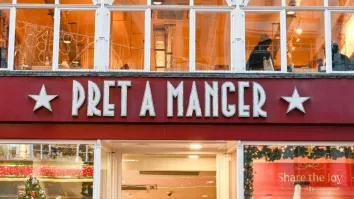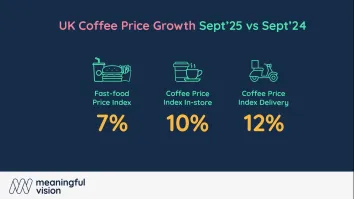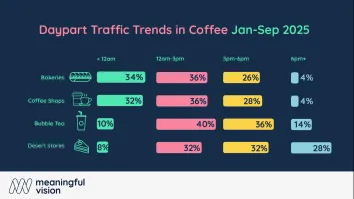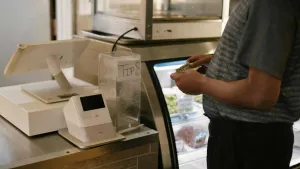
Foodservice spend dips 6% in 2022 as more eat at home
Spend is expected to bounce back as inflation eases and COVID-19 restrictions are reduced.
Total foodservice spending in 2022 was down by 6% to €292b in Europe, compared to €309b for the full year 2019, according to The NPD Group’s State of the European Food Service Industry report.
The report revealed that continued hybrid working, spending more time at home and the ease of both online shopping and ordering food in has resulted in increased consumption at home however and made it difficult for the food service industry to completely rebound.
NPD predicts the sector to bounce back to pre-pandemic levels this year as inflation eases and COVID-19 concerns continue to reduce.
Consumption of ready-prepared food from restaurants but consumed at home is expected to remain 50% above 2019 levels and will represent more than 1 out of 5 meals claimed NPD, which recently merged with IRI to create a leading global technology, analytics and data provider.
While sales of food deliveries will remain way above pre-pandemic levels, the pace of growth will slow. More than a third (36%) of consumers in NPD’s Uncertainty Survey say they plan to cut food service expenditure in 2023.
“Inflation in food service impacted prices less than in food retail, perhaps helped by the rapid way restaurants adapted the architecture of their offering and dropped low-margin products from their menus. Nonetheless, consumer confidence remains low across Europe and eating out is now perceived as expensive, with 60% of consumers claiming that prices in restaurants had increased too much for them. 7 out of 10 consumers noticed that prices increased more than they expected. As a result, people are visiting restaurants and food service establishments less often with the number of visits down by -14% in the last year. Eating out has become a special treat,” Jochen Pinsker, the Senior Vice President of European Foodservice at NPD Group
More from the report:
Trading down or out and ordering less
Consumers are also finding other ways to keep down the cost of the final bill. Trading down is particularly popular with people changing from casual dining to limited-service restaurants. 16% of people in NPD’s survey said they were going to a different restaurant with better prices or promotions.
Going to their usual restaurant but ordering less to reduce the final bill is a strategy adopted by 15% of people who order fewer sides, starters and drinks. Sales of alcoholic drinks for example declined by -12.8% during the financial crisis in 2009.
A similar decline was also seen across supermarkets, convenience stores and off-licenses in 2022. IRI reported a €2.7Bn (4%) decline in sales of Beer, Wines and Spirits in 2022 taking the total category sales value for the year to €66bn.
Trading out of food service altogether is another strategy being adopted. At-home eating occasions, which increased during the pandemic as the food service industry almost shut down, continued to remain at an increased level during 2022 – with 513 million more visits compared to 2019.
“Covid changed work and private life forever. Combine this with continued pessimism about the economy and healthier consumer behaviours, the disruption seen to the foodservice industry structures is likely to remain for some time if not forever. People are increasingly spending time and therefore eating food at home. That is a great opportunity for the restaurant industry when offering the right solution, order methods and packaging. But it is also vulnerable to pessimistic consumers when they are forced to manage their finances. Eating out has become a discretionary cost for price-sensitive consumers. Despite this, the industry is stable, and we can expect to see further growth throughout 2023 and into 2024, when the sales for the sector may completely rebound to its pre-pandemic state. Tapping into the at-home trend and managing price perception could provide further opportunities for growth,” Pinsker said.
Other trends highlighted in the report include:
- Quick Food Service (QSR) back to growth - Overall the limited service sector returned to growth in 2022 with sales increasing for the full year v’s 2019 by 3% to €119bn. However, eating out connected to work or school/college/university, which represents as much as 36% of all sales in food service, continues to suffer with nearly half (41%) of EU workers working remotely and more people preparing their ‘eat out’ food at home with packed lunches and coffee to go.
- Families and people on a low income are making deeper changes and are more likely to be trading out of food service altogether, opting to cook dinner at home, especially during the week for convenience dinners. Restaurants that cater for weekday evening dining are likely to feel the impact. This could also slow the growth of delivery services.
- Healthy eating and sustainability are still a focus but not a priority when it comes to affordability.



























